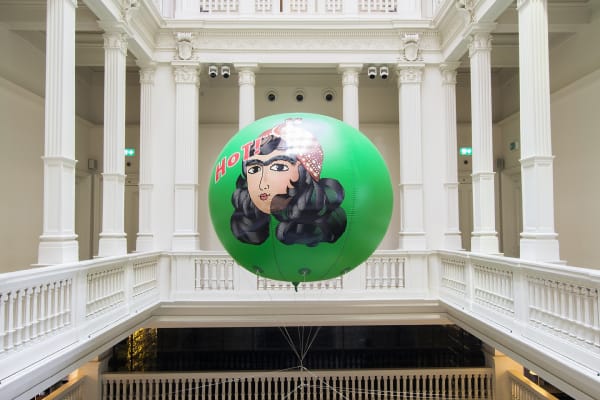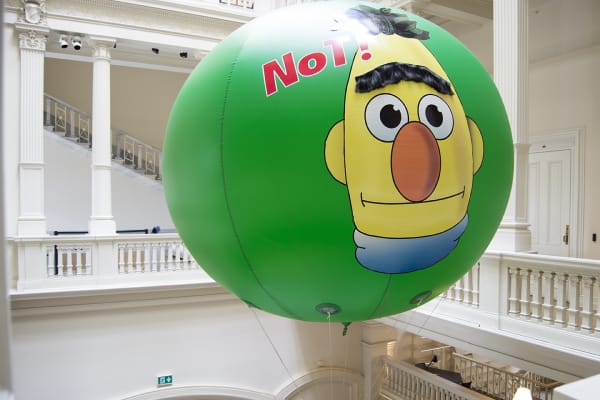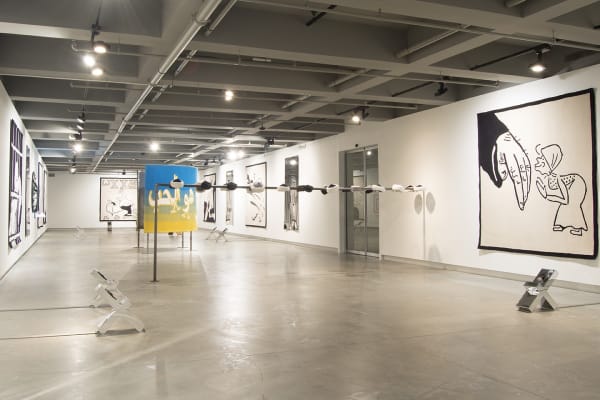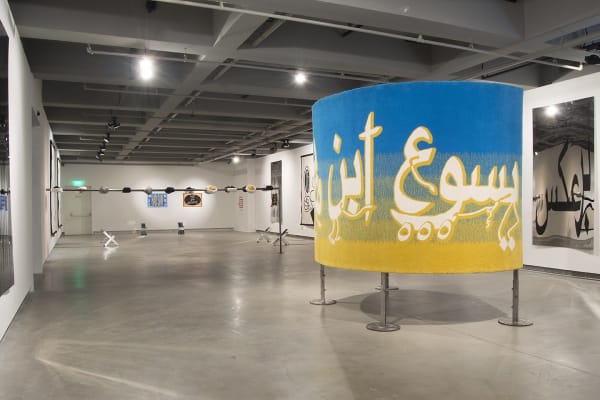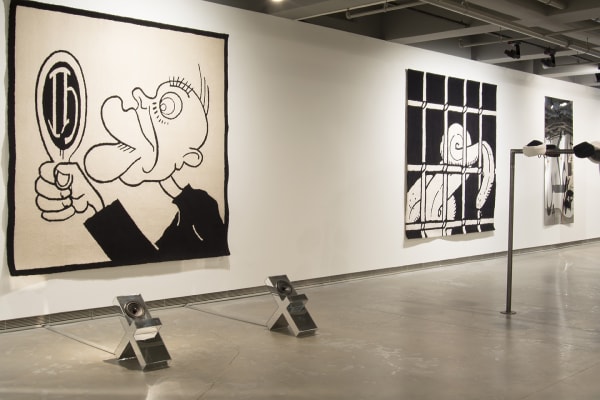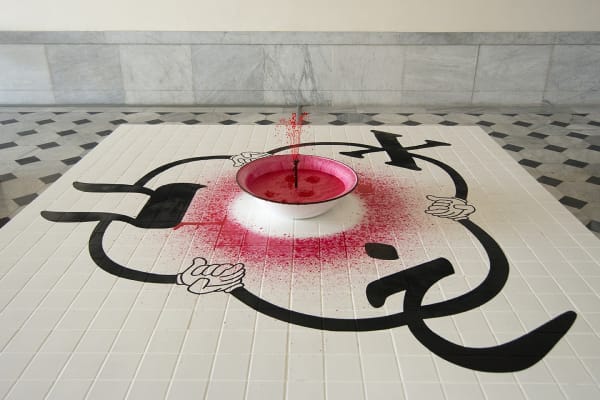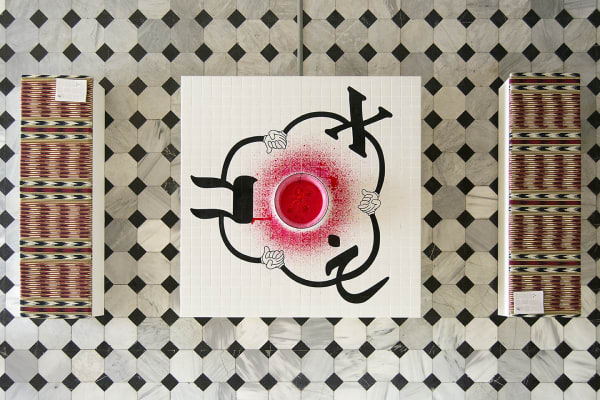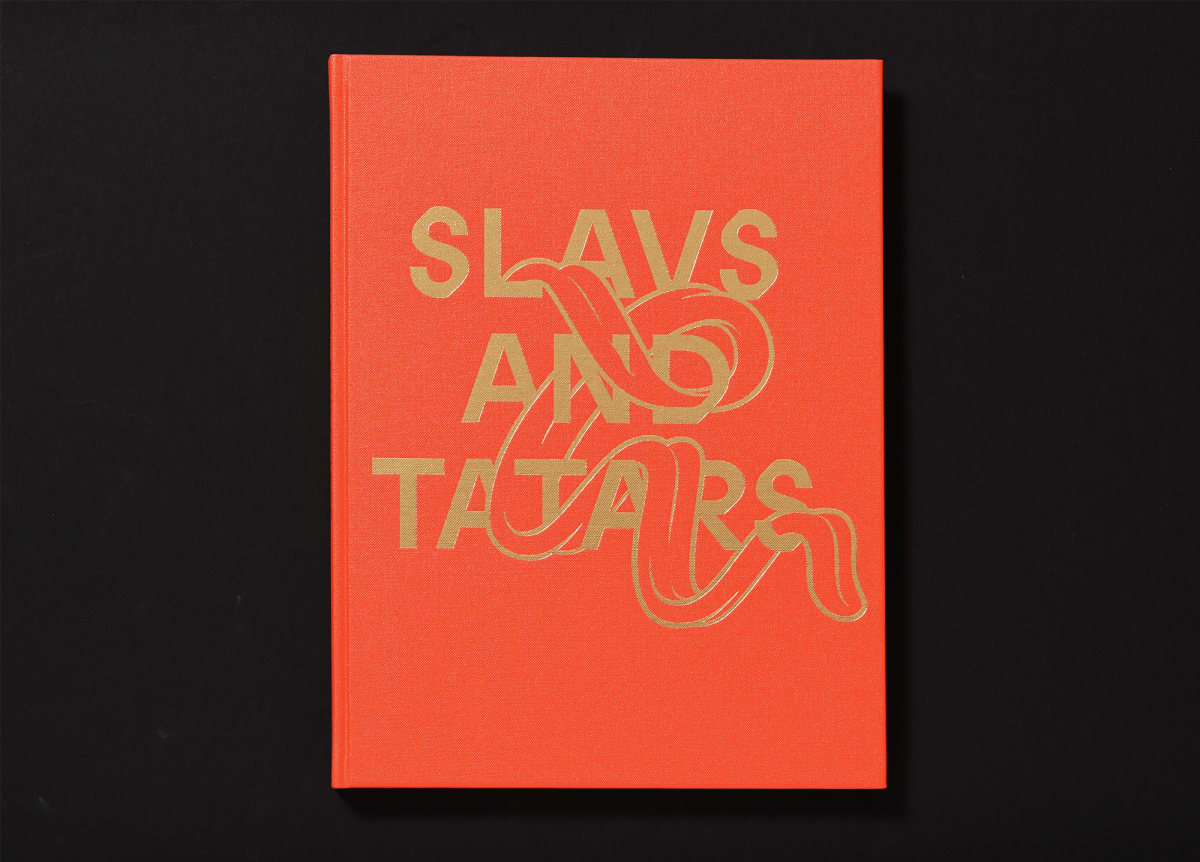SLAVS AND TATARS: MOUTH TO MOUTH: SALT GALATA, ISTANBUL, TURKEY
Founded in 2006, Berlin-based collective Slavs and Tatars, is a faction of polemics and intimacies devoted to an area east of the former Berlin Wall in Germany and west of the Great Wall of China known as Eurasia. After being shown at Ujazdowski Castle Centre for Contemporary Art, Warsaw and Pejman Foundation, Tehran, the collective’s first mid-career survey Mouth to Mouth is presented at SALT Galata. The itinerary of the exhibition from Istanbul to Vilnius, Belgrade, and Dresden reflects Slavs and Tatars’ engagement and interest in Eurasian geography.
Mouth to Mouth brings together works addressing cultural translation, shared linguistic heritage, and mysticism in contemporary societies. The exhibition responds to the cultural and linguistic affinities of its locale, and reconstructs itself accordingly in each iteration the same way words take on various shapes and meanings in different geographies. Taking place across three floors of SALT Galata, this presentation especially highlights the collective’s research into historical shifts in Turkic languages, often related to transformations of political and social systems.
Love Letters, a series of carpets from 2013-14, revisits the march of alphabets that accompany empires, namely among Turkic speaking peoples of the former USSR and Anatolia. Located in the gallery space on floor -1, this series underlines the use of language in politics as a propaganda tool via the caricatures of futurist poet and Bolshevik supporter Vladimir Mayakovsky, while including references to the 1928 language revolution of the Republic of Turkey. Slavs and Tatars also participates in polemics around relations between language, nationalism, and religion by formulating tongue-in-cheek witticisms with vibrant graphics and typography, most notably in printed materials such as The Wizard of Öz Türkçe (2014), Nations (2007), and Behind Reason (2012) on floor 1.
A body of work built on the esoteric dimensions of the uvular fricative sound of [kh]-mostly absent from Western European languages-relates to ideas and concepts ranging from Islamic mysticism to the Russian literary avantgarde. On floor 1, the installation Reverse Joy (2012) enshrines the letters that correspond to the [kh] sound in the Cyrillic, Hebrew, and Perso-Arabic alphabets by stenciling them around a small fountain that sprouts a nebulous red liquid. Another installation in SALT Research, Qit Qat Qa (2013) offers the Cyrillic approximation for [q] or the guttural qaf as a smooth, shiny leg. Khhhhhhh (2012) is on view alongside this installation, among the eight books the collective has published.
Dispersed through the gallery space on floor -1, Lektor (2014-ongoing) invites the public to an uninterrupted sound sequence with excerpts from the 11th century ethical and political treatise Kutadgu Bilig (lit. the wisdom that brings happiness) in six languages: German, Arabic, Persian, Polish, Turkish, and its original Uighur. Similar to the synchronicity evoked by rahlé-shaped, mirrored speakers of Lektor, a new text-based video Hamdami (2016) considers the simultaneity of sensuality and spirituality in the Sufi tradition. This work in SALT Research overlaps scripts in Persian and Turkish with audio in English.
The sculpture series Triangulation (2011), including Not Moscow Not Mecca, Not Kaliningrad Not Kerbela, Not Maui Not Medina, Not New York Not Najaf and Not Quito Not Qom, connects the different floors of the building. The series not only references Communists’ historical anti-Islam campaign targeting Central Asia, but also extends this dichotomy to the 20th and 21st centuries with wordplay.
On the occasion of this mid-career survey, a monograph is published by Walther König.
